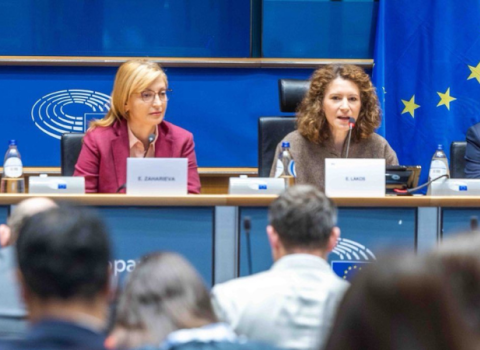
Jim Goodnight
Winning the global competition to attract knowledge workers will be the defining success factor over the next decade. Both talent and technology are mobile. I’ve spent some time in India over the past two years and I can tell you not only is talent mobile, but hungry. Hungry for the opportunity to excel. There is a confidence and a “can-do” attitude that is refreshing and exciting.
There is widespread corporate weakness in the ICT sector in Europe. According to the OECD of the top 250 ICT firms in the world 56% (139) are located in the US, while just 13% (33) are in Europe.
There are well-documented and often discussed barriers to economic growth: inflexible labour policies, protectionism, anti-immigration. These are policies and attitudes born of fear not daring.
But there was a time when Europe was simply audacious. Bold, daring adventurers like Magellan, Columbus, Cervantes, discovering new worlds and expanding the collective conscience. They were literally discovering that the world is not flat.
Fearless in their collective quest for the new and different - it was innovation in its most pure and basic sense.
How does Europe re-capture that sense of daring, of unlimited imagination?
How does Europe fulfil its potential for innovation and capitalise on its collective faculty for research and innovation?
In Europe, the word “innovation” is whispered with a reverence generally reserved for prayers. Yet, innovation is merely an idea. One building block on which other blocks must be laid, in order to build a product, or process, or a business method.
What we ought to be looking at when we talk about innovation is how do we maximize the global opportunities to build on one another’s ideas?
Here are a few suggestions - and then let’s discuss some steps going forward.
First: Don’t invest money in areas where companies wouldn’t spend their own money …
The clamour for “useful” research by policymakers has resulted in little support for basic research. Especially guilty is the EU’s Framework Programme.
To quote the FP 7 literature. “Requests for proposals are expected to identify possible practical as well as scientific benefits.”
It’s a mistake, the result of which is companies trying to find marginal areas of interest that qualify for funds but into which they wouldn’t bother to put their own money!
The Framework Programme has become chiefly a networking opportunity instead of a way to boost basic research - and basic research is what governments ought to be funding
The EU need not look to the US for a model. Scandinavia and Switzerland have invested in high-quality basic research without the massive defence and health expenditures of the US.
It’s admirable to talk about increasing funding for the Framework Programmes. Just ensure that the money is well-spent and does not become a cover for a massive corporate welfare programme.
Plus policymakers also ought to ensure that research results are open and available to the public online libraries and databases that would allow access by companies and academics alike.
In the US we have the Bayh-Dole Act, which has allowed university researchers to pick up their research and carry that intellectual property with them to start companies. It is a concrete way to encourage innovation.
A second suggestion: Drive good governance, transparency and accountability through public sector spending.
This can be done by leveraging public procurement and public spending to initiate change. One way is to invest in the new technologies that will increase productivity in government.
This year governments in Western Europe will spend €50 billion on IT alone. European public spending and procurement ought to drive innovation policy and be a showcase for new technologies and methods for increasing productivity.
Build ambitious technologically daring missions justifiable for their intrinsic social and political value.
A third suggestion: Start with the end goal in mind.
If you reduce the cost for any business by providing a mix of economic incentives, tax credits, grants, loans - and tie these incentives to desired outcomes - such as higher-fuel efficiency vehicles or other green policies.
There is a tremendous synergy between research and innovation. Venture capitalists are like hawks when it comes to spotting innovation. Many governments have tried and failed to lure venture capitalists to invest in particular projects.
The failure is not in getting venture capitalists to accept government subsidies to invest in a particular project. Rather, the failure comes in seeking to lure business people to invest money in a project where the merits of the project are not enough to attract the necessary investment capital.
Finally: Encourage a political and social dialogue on success.
Failure and success are two sides of the same coin. Both have to be allowable and acceptable. The first is a function of policy, the second of culture. Political leaders ought to acknowledge that a culture of "no failure" means a culture of limited success.
Starting a new project is like digging a hole. The key to digging a hole is to stop digging while you can still get out. I’ve started a lot of holes in my life. I carry a pretty big shovel so those holes can get pretty deep pretty fast. You can’t be afraid to dig up the yard.





 A unique international forum for public research organisations and companies to connect their external engagement with strategic interests around their R&D system.
A unique international forum for public research organisations and companies to connect their external engagement with strategic interests around their R&D system.